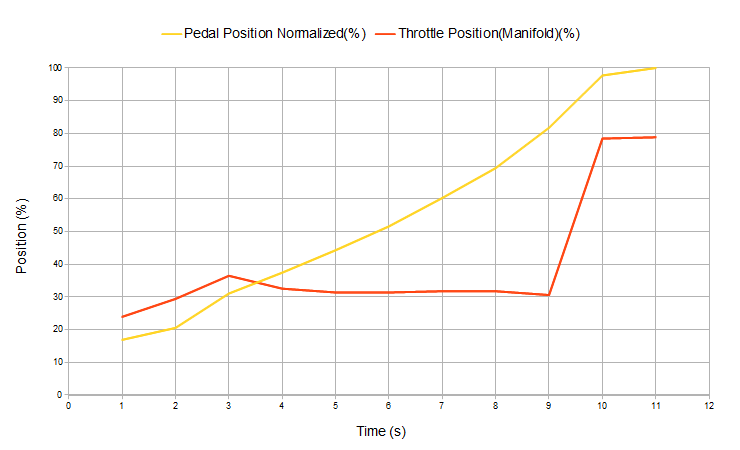Here's an update...
The Precision turbo definitely improved overall lower RPM driveability because it spools more quickly at low RPM.
Adding a boost controller improved responsiveness of the throttle in certain conditions because it forces the wastegate to stay fully closed until target boost is nearly reached (improves spool time when spooling up to higher boost levels).
Putting the correct spring in my BOV made another incremental improvement to initial throttle response starting from low engine load conditions (cruising gently around town). I somehow ended up with a BOV that had the wrong spring in it. The spring was too weak and allowed the BOV to stay wide open at idle and other light engine load conditions.
After all of this, I'm quite happy with overall driveability. But that stupid jerk in acceleration still does exist around 2700 under some conditions, and I still occasionally experience a glitch in power delivery around 2200 rpm (certain amounts of engine load, etc., worse when the engine is not fully warmed up). Subjectively, these issues seem a bit more subdued now with the quicker spooling Precision turbo, but they are not solved.
I may be onto a new clue. First, I recently figured out how to monitor/log the physical pedal position with the Android Torque app. Until now, I have only been able to monitor/log the position of the throttle blade itself, which is commanded by the ECU based on pedal position and probably a hundred other factors. We can't assume that throttle blade position is directly proportional to the physical pedal position.
Additionally, I noticed a new driveability quirk. In 5th gear on the freeway, I slowly press the pedal to accelerate. At first, everything works as expected. Push the pedal a bit more -> a bit more boost -> a bit more acceleration. But it soon falls apart. At some point, boost and acceleration both DECREASE a bit as I push the pedal further, then it seeems to just get stuck. There's a wide range of pedal positions in the mid-travel area that seems to have zero impact on acceleration. Then as I approach full throttle, BAM! I suddenly get full boost and full throttle acceleration.
This same thing happens every time I try it. Very easy to reproduce. So I data logged it, including both the physical pedal position and the throttle blade position:
click for full size
Note: this acceleration started around 2700 rpm and ended around 3300 rpm at freeway speeds in 5th gear.
Well that doesn't look right! It's a perfect visual representation of what I experience. There's clearly nothing wrong with the pedal position sensor. It reports a smoothly increasing pedal position. The actual throttle position commanded by the ECU is where the problem lies. There seems to be a problem somewhere in the ECU's decisions about how much to open the throttle. I suspect it's not as simple as a stupid mistake in a throttle mapping/curve lookup table. I'd guess it's a much more complicated interaction with other calibrations about how much torque the ECU thinks the engine is capable of vs what it thinks is acceptable to to provide (some kind of torque management?), or an even more abstract problem with some other seemingly unrelated calibration that gets taken into consideration when the ECU decides how much throttle to allow.
I'm waiting for a response from Prodigy about this. In the meantime, I'm playing around with more effectively using the Torque app for data logging, and then I want to try to capture some detailed data logs of the other remaining "hiccups" around 2200 and 2700 rpm. I'm hoping to find another odd relationship between pedal position and ECU-commanded throttle position that could explain those issues.
I'm really hoping this throttle mapping issue is the key to solving the remaining issues with the tune.
BTW, if you are wondering why the manifold throttle position only goes up to just under 80%, it's because of the thickness of the blade and the shaft. Opening the throttle blade beyond 80% would not increase airflow, or the cross-sectional area of the throttle opening. So somewhere just under 80% throttle blade opening is actually effectively 100% throttle.
Here's a long paper all about it: http://www.diva-portal.org/smash/get...184/fulltext01
And a side observation... once the ECU does finally decide to really go full throttle, it was interesting to see the turbo quickly spool up to a full 9.2 psi at only 3200 rpm







 Reply With Quote
Reply With Quote

Connect With Us